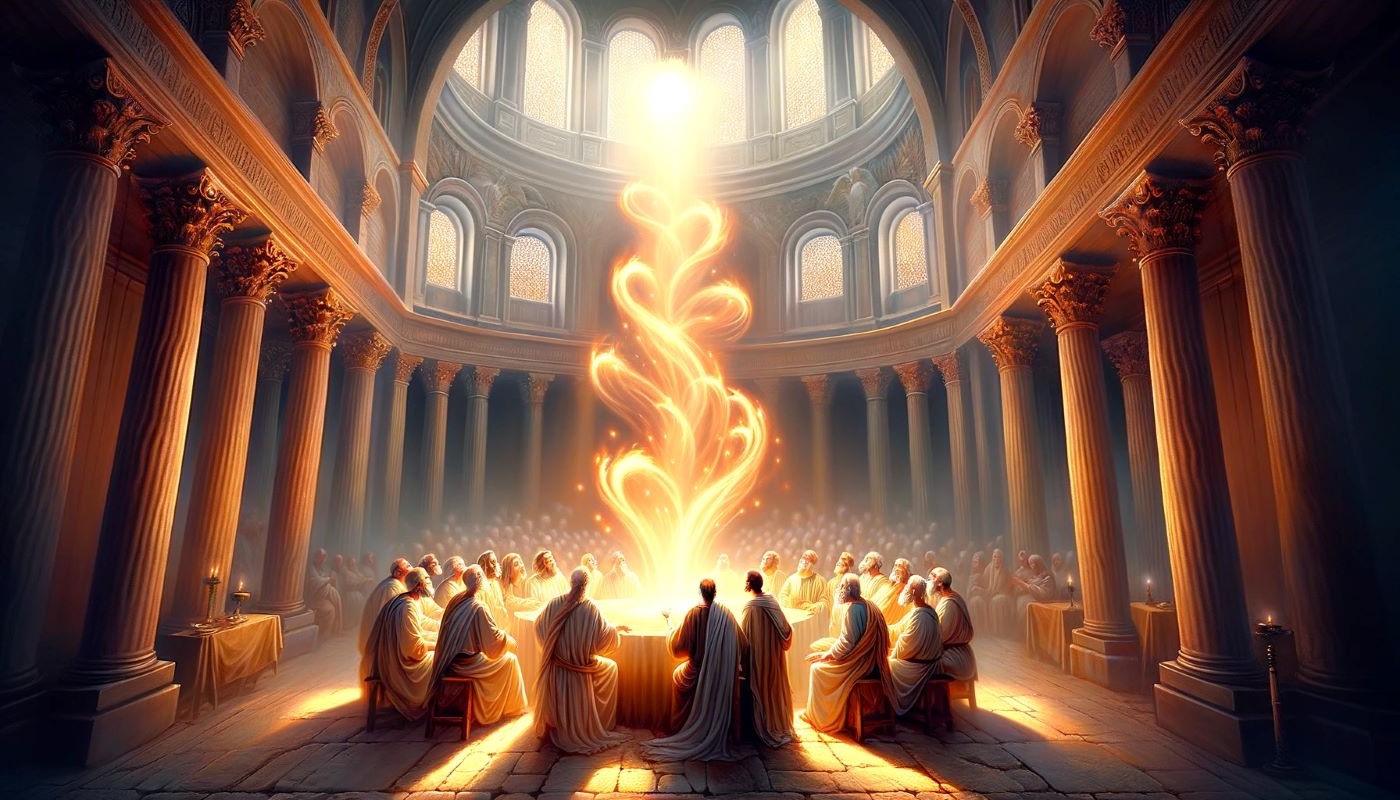
Pentecost, often celebrated with vibrant services and red attire, marks a pivotal moment in Christian history. Pentecost is not just a day but a profound event that commemorates the descent of the Holy Spirit upon the apostles and other followers of Jesus Christ, as described in the Acts of the Apostles. This event, occurring fifty days after Easter Sunday, signifies the birth of the Christian Church. It's a time of joy, reflection, and renewal for believers worldwide. Understanding Pentecost's significance helps us appreciate its impact on Christian theology and the universal church's formation. From its biblical roots to modern-day observances, these 20 facts about Pentecost will enlighten and inform, offering a deeper insight into why this day is so revered in the Christian calendar.
What Is Pentecost?
Pentecost is a significant event in Christian tradition, marking the descent of the Holy Spirit upon the apostles and other followers of Jesus Christ. This event occurred on the 50th day after Easter, celebrating the resurrection of Jesus. Pentecost is often referred to as the birthday of the Church, symbolizing the beginning of its mission in the world.
Origins of Pentecost
-
Pentecost originally was a Jewish holiday known as Shavuot, celebrated 50 days after Passover. It commemorated the giving of the Torah to Moses at Mount Sinai.
-
The term "Pentecost" comes from the Greek word "pent?kost?," meaning fiftieth. It signifies the 50 days that have elapsed since Easter Sunday.
The Biblical Account of Pentecost
-
According to the Acts of the Apostles in the New Testament, Pentecost is when the Holy Spirit descended upon the apostles in the form of fiery tongues. This event allowed them to speak in foreign languages, thus enabling them to spread Jesus' message across different cultures and nations.
-
The apostle Peter played a crucial role during Pentecost. He delivered a sermon that led to the conversion and baptism of about 3,000 people.
Symbols of Pentecost
-
Flames or tongues of fire are common symbols representing the Holy Spirit's descent upon the apostles.
-
Doves are also symbolic of Pentecost, representing peace and the Holy Spirit.
-
Red is the liturgical color of Pentecost, symbolizing the fire of the Holy Spirit. Churches and congregants often feature red in their decorations and attire on this day.
Pentecost Traditions Around the World
-
In Italy, it's customary to scatter red rose petals from the ceilings of churches to symbolize the Holy Spirit's descent.
-
In France, trumpets are blown during Pentecost services to recall the sound of the mighty wind that accompanied the Holy Spirit's arrival.
-
In some Orthodox Christian traditions, Pentecost is celebrated with the "kneeling prayers," a series of prayers that are recited for the first time since Easter.
The Impact of Pentecost on Christianity
-
Pentecost is considered the birth of the Christian Church. It marks the start of its mission to spread the teachings of Jesus Christ to the world.
-
The event emphasizes the importance of the Holy Spirit in Christian theology as a guide and comforter for believers.
-
Pentecost shows the universal nature of the Christian Church. The ability of the apostles to speak in different tongues symbolizes the Church's call to reach all people, regardless of language or nationality.
Modern Celebrations of Pentecost
-
Today, Pentecost is celebrated with various church services, including readings from the Acts of the Apostles, singing hymns, and prayers for the Holy Spirit's guidance.
-
Some communities hold processions and outdoor celebrations to commemorate Pentecost, reflecting the joyous and public nature of the original event.
-
Pentecost is not only a time for remembering the Holy Spirit's descent but also for personal reflection on the gifts of the Holy Spirit present in each believer's life.
Pentecost's Place in the Liturgical Year
-
Pentecost concludes the Easter season in the Christian liturgical calendar. It occurs ten days after Ascension Thursday, which commemorates Jesus' ascension into heaven.
-
The day after Pentecost is known as Whit Monday or Pentecost Monday. In many countries, this is a public holiday.
-
The season after Pentecost is called "Ordinary Time" in many Christian denominations. It's a period for growth and maturation in faith, inspired by the Holy Spirit's ongoing influence.
-
Pentecost serves as a reminder of the Church's mission to spread the gospel and as a celebration of the power and presence of the Holy Spirit in the world.
A Final Brushstroke on Pentecost
We've journeyed through the vibrant hues and shades of Pentecost, uncovering its deep roots in Judaism, its significance in Christianity, and how it's celebrated around the globe. From the Feast of Weeks to the descent of the Holy Spirit, Pentecost stands as a pivotal point in religious history, bridging old traditions with new beginnings. Its impact stretches beyond religious ceremonies, influencing cultures, languages, and communities worldwide. Whether through the diverse tongues of fire or the shared bread at communal gatherings, Pentecost reminds us of the power of unity and the strength found in diversity. As we close this chapter, let's carry forward the spirit of Pentecost, embracing our differences and finding common ground in our shared humanity.
Was this page helpful?
Our commitment to delivering trustworthy and engaging content is at the heart of what we do. Each fact on our site is contributed by real users like you, bringing a wealth of diverse insights and information. To ensure the highest standards of accuracy and reliability, our dedicated editors meticulously review each submission. This process guarantees that the facts we share are not only fascinating but also credible. Trust in our commitment to quality and authenticity as you explore and learn with us.

